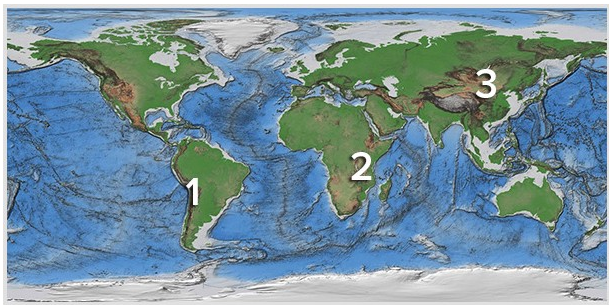How does elastic rebound theory explain when earthquakes occur? What will be an ideal response?
Where the rocks on the opposite side of a fault are on pieces of crust that are moving in different
directions, the rocks are initially locked in place by their strength and friction. The rocks do not move,
but they do deform. As the pressure builds, the strength of the rocks is eventually exceeded. They
rebound to their original shape, but the crust on either side of the fault has moved to a new location.
You might also like to view...
Which of these regions is high because of a continental collision?

A) 1, Andes of South America
B) 2, East Africa Rift
C) 3, Tibet
D) None of these are correct.
What is the “precession of the equinoxes,” and how does it affect glaciation? What will be an ideal response?
Competitive exclusion is not as common as many biologists expected, in large part because
A) there just are not that many species of organisms on Earth. B) ecosystems are more homogeneous than was appreciated. C) even when two species share an identical niche, they find a way to cooperate. D) subtly heterogeneous environments allow apparent competitors to occupy separate niches.
List and explain several processes by which an unstable atmosphere can be made stable.?
What will be an ideal response?